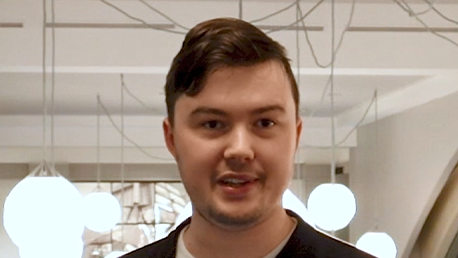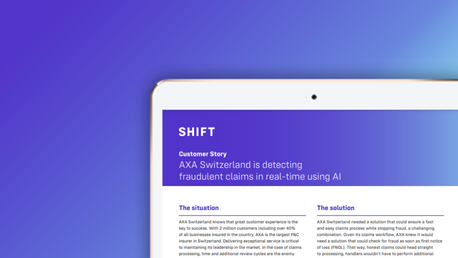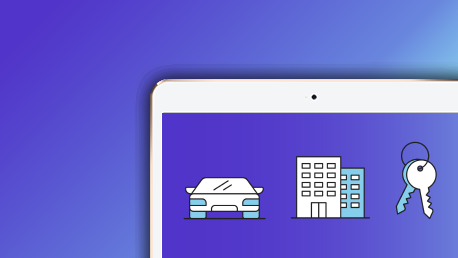Acting quickly with AI and machine learning to support better, faster insurance decisions
Ask anyone at Shift Technology what makes them proud to work for the company, and they’ll probably answer that the work they do positively affects their customers and the global insurance industry on a daily basis. The company’s AI-powered decision-optimization solutions and fraud-detection tools help the world’s leading insurers mitigate fraud and risk across policy life cycles, streamline claims processing, increase operational efficiency, and deliver superior customer experiences.
For this to be possible and sustainable, AI and machine learning have always been part of Shift Technology’s DNA, starting with its initial use case for claims fraud–detection. Insurance companies regularly struggle with costly and complex fraud-detection challenges, especially as fraudsters continue trying to outsmart systems and standards. While technology evolves to help detect fraud, so does the technology that enables fraudsters to cause more harm—often billions of dollars a year.
Shift Technology prioritizes staying at the forefront of AI and machine learning, and it finds engaging and innovative ways to drive positive outcomes with evolving fraud schemes and other obstacles for insurance companies and other clients using its platform. Because so much of its business begins and ends with data, the company’s data scientists work closely with customers to understand how they operate and help them get the best out of its platform. Insurers can then make smart, informed decisions based on their data—and most importantly, Shift Technology’s analysis of it.
To provide an easy on-ramp for clients, Shift Technology standardized its platform on Microsoft Azure. The result is strong, effective, and lean cloud operations with which engineering and data science teams can take full advantage of new capabilities, regardless of where they are. “Given the global footprint of Azure and its overall capabilities, the core of the Shift platform runs with a Microsoft technology stack that allows us to operate and innovate simultaneously,” says Marc Jones, Chief Technology Officer at Shift Technology.
A prime example of this innovation is the company’s use of Azure OpenAI Service, found within Azure AI Foundry, and Azure AI infrastructure to hone its generative AI capabilities and help make insurance decisions quick, accurate, and transparent. “Because Microsoft is on the forefront of enabling generative AI adoption and we’re on Azure, we can use Azure OpenAI to move very quickly from research to true proof of concept and then straight to production,” adds Jones.
Consolidating weeks of policy, claim, and documentation digestion into days
With each of its solutions, including recently introduced tools for automating claims, mitigating underwriting risk, and improving subrogation recovery, Shift Technology processes and generates mass amounts of documents supplied in varying formats, languages, and structures. In fact, it’s already analyzed more than 2.6 billion policies and claims and their supporting documentation. Historically, staff would face weeks of data labeling and model training to provide useful outputs. “A fair amount of unstructured data comes into our platform as documents, so being able to automate information classification and extraction with a high degree of accuracy is critical,” says Jones.
Using machine learning–based optical character recognition (OCR) with cloud-based Azure AI Vision, also found in Azure AI Foundry, and both OCR and layout detection with Azure AI Document Intelligence, Shift Technology simplifies and streamlines document classification and can quickly extract pertinent information. “Reducing weeks of work to days, we’re now able to maximize Azure OpenAI and focus on the prompt engineering that allows us to extract data from those documents,” continues Jones. “We can then fine-tune prompts to get the output that we had previously in a way that’s faster and better.” In doing so, it’s built a library of prompts for future prompt engineering, and it continuously fine-tunes the prompts and applies them to other document types.
Given the scale of its services and the volume of its data, Shift Technology uses Azure Kubernetes Service (AKS) for container deployments to help with scaling specific elements of the platform. “We tend to still run heavy core compute workloads on VMs or containers in AKS,” explains Jones. “When we think about taking on more net-new, cloud-native services, orchestrations, or workflows, that’s when we’re really looking to leverage eventing with Azure Service Bus, easy deployments of containers with Azure Container Apps, and Azure Functions for very focused workloads.”
In its new environment, Shift Technology can innovate quickly and easily spin up new AI endpoints for Azure OpenAI that are then available for immediate use. The company also appreciates Azure OpenAI always having a large, continuously updated model catalog. Teams use GPT-series models in production but compare them with other models available in Azure AI Foundry, so having the broad selection available to compare and test streamlines their work. Serverless deployments of language models are also beneficial for testing model capabilities securely and without the need to spin up large or expensive VMs.
Improving and maintaining transparency, data security, and compliance to meet client needs
By nature of the industry, Shift Technology’s insurance clients’ data must be hosted within their regions to meet data security and compliance requirements. Because of this, and to meet client demands, the company needed its AI and machine learning capabilities to run natively in its specific Azure regions. Historically, Shift Technology has run most of its AI models on infrastructure it operated itself to fully understand and maintain data flows, including where data resides and how it’s used. While newer generative AI tools provide options for self-hosting and training, they’re complex, especially for compute- and GPU-intensive capabilities.
“We wanted to take advantage of the newest generative AI, and in a perfect world that meant using a hosted solution, but that also requires us to meet strict security and compliance standards,” explains Jones. “Being able to bring Azure OpenAI into our Azure ecosystem allowed us to have conversations with Microsoft to understand how data is used, how it’s secured, and potential compliance implications.”
Similarly, Shift Technology can have transparent conversations with its customers and assure them that their data won’t be used for training, which was a key factor in choosing Azure OpenAI. The company can also take advantage of global Azure regions and boost resiliency within those regions through multiple availability zones. “We have more and more teams and use cases where it’s become a snowball effect,” says Jones. “It’s fun when you can introduce a new technology that has the impact where people are ready and willing to make their processes better to benefit our customers.”
Providing exceptional value through continuous innovation with AI and other technologies
Given its success so far, both internally and with its insurance clientele, Shift Technology plans to continue using generative AI to improve what it does today and introduce new capabilities to the platform, with current interest in agentic systems. It’s already started using GitHub Copilot and is evaluating potential developer efficiency and productivity gains. “For us, it’s less about writing code and more about augmenting a developer’s ability to write code and make the developer’s ancillary functions easier to accomplish,” says Jones. “More than anything, I want our continuous innovation to help the industry view us as a leading AI company that’s using—and constantly searching for—the latest technologies to best provide for them.”


